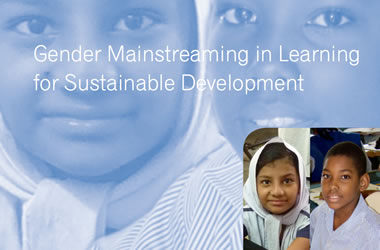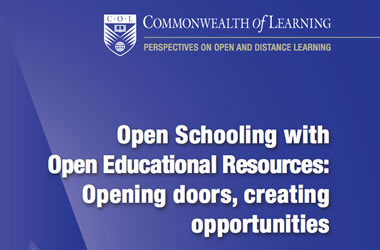An estimated 63 million girls are not enrolled in primary and secondary schools.
GIRLS Inspire mobilises the power of open and distance learning (ODL) to provide secondary schooling and skills development training to women and girls who are prevented from attending schools by barriers such as early marriage, cultural norms and distance from schools.
Open education means that there are minimal barriers to participating in education irrespective of age, class, caste or previous qualifications. Distance education means that the teacher and the learner are separated and do not necessarily have to be in the same place at the same time. Instead, the learners receive appropriate study materials, are given tutorial support at designated study centres which are easily accessible and considered appropriate by the community.
Why is it important to invest in secondary education? Researchers have established the link between secondary education and economic opportunity. Riboud et al show that groups that have attained education beyond the primary level in South Asia find employment much faster than those who haven’t. Furthermore, research shows that technical and vocational skills gained in school not only increase retention and completion but result in a transition to work. It is clear that secondary education has a major role in social and economic development. Yet many governments do not have the resources to provide brick and mortar solutions.
GIRLS Inspire and its use of open, distance and technology-enabled learning.
GIRLS Inspire believes that open schooling is a viable solution providing secondary schooling at scale. It means the physical separation of the learner from the teacher, the use of unconventional teaching methods and Information and Communications Technologies (ICTs) and in general a flexible approach so that learners can study at their own pace, place and time. This makes it particularly useful for girls and women who cannot go to school.
Providing skills development using blended approaches radically reduces the costs of training and reaches the hitherto unreached sections of society. Video and TV are popular technologies as are basic mobile phones. Open Education Resources (OER) can also provide quality content to scale up training opportunities while at the same time reducing costs.
Technology plays an important role in this process – it could be print, audio, video, radio, TV, mobile devices and online options. Context determines the technology choices. By employing relevant technology, remote areas can have full access to the networked environment in a very cost- and time-effective manner. For example, the Commonwealth of Learning (COL) has developed Aptus or the ‘Classroom Without Walls’ which is an innovative, low-cost device that can reach girls and women in regions with poor or limited broadband connectivity to benefit from digital resources and learning networks by way of an off-grid, offline virtual classroom.
Case Studies
The following stories illustrate how open and distance learning can be used to reach the hardest-to-reach women and girls and those at risk of early marriage.

Bangladesh

Pakistan
Resources
Learn more about open, distance and learning and technology-based education and training with the following resources:





